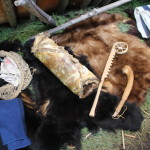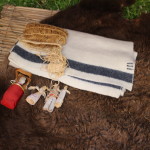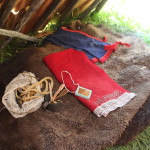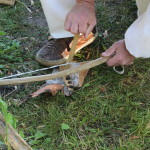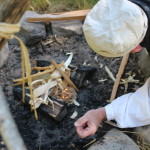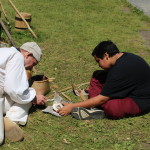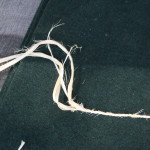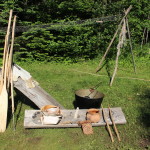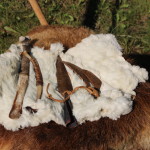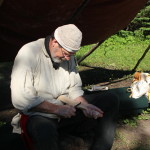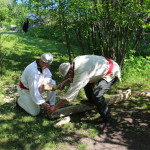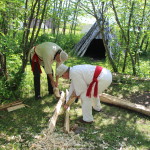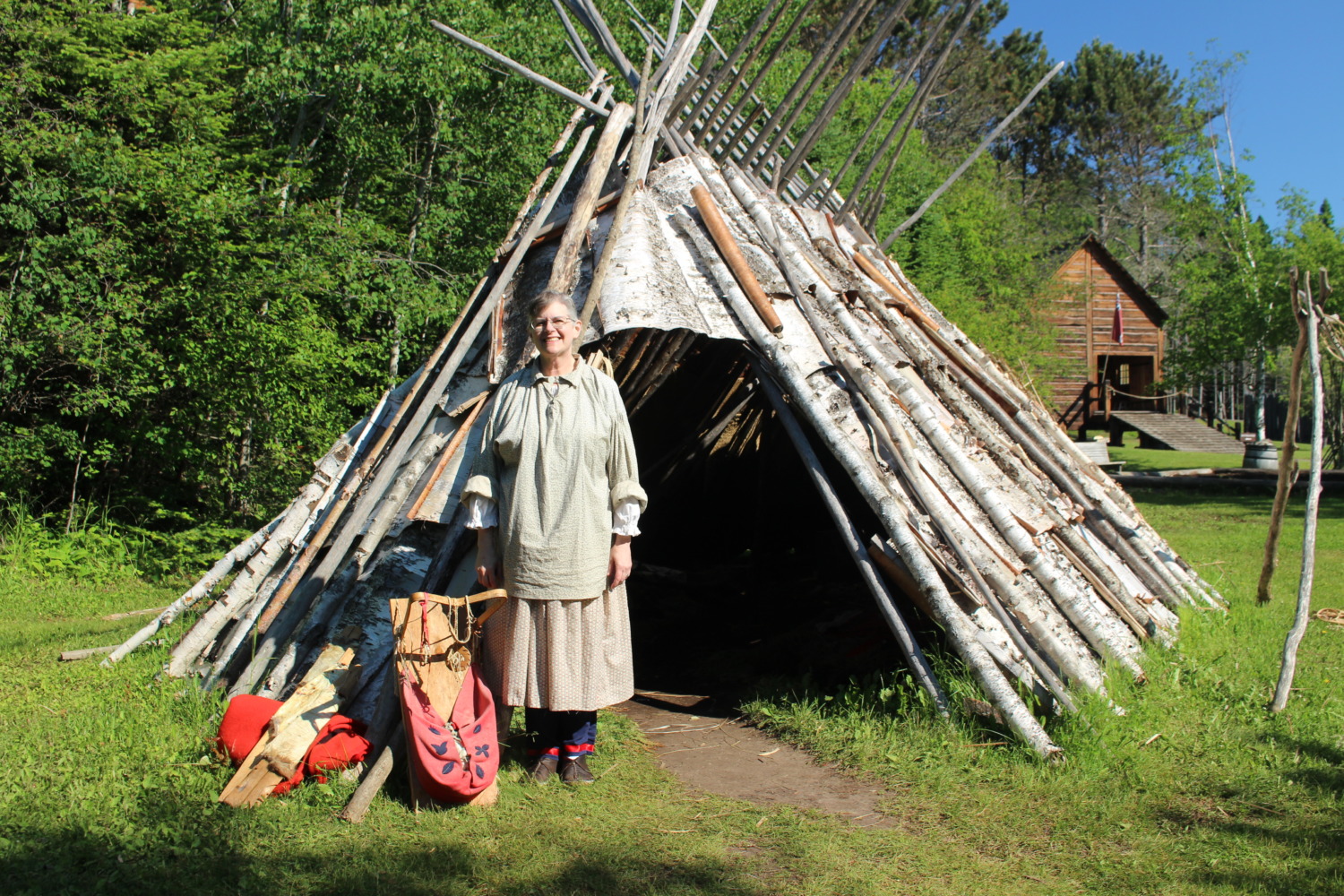
Now that Tom and I are back at Grand Portage National Monument, we have completed our shadowing of the experienced rangers in each area where we will work. Grand Portage has six areas, five of them historic, and we will spend time in each one interpreting it and talking to the people who visit the monument. My plan is to highlight one of these areas each week. This week Tom and I spent two days in the Ojibwe Village, so I will begin with that.
The Ojibwe Village is the first historic area that people encounter when they come to the monument. Our job in the Ojibwe Village is to “get people off the path.” There is a path that goes into the “fort” and when no one is in the village, people just stay on the path. We want people to talk to the interpreters and be curious about what they are seeing. We set the tone for this in the Ojibwe Village by inviting people to see the daily tasks we are doing and come into the homes that are set up.
The two days I worked in the Ojibwe Village this week were absolutely beautiful. Sunshine and temperatures close to 70. Setting up the village takes time because it is outside the locked areas of the park and people can come in at night. Every morning we unlock the shed where the items for this area are stored and spend about 30 minutes getting the village set up. We have to bring out furs and blankets to put in the peaked lodge – a two family home and the largest reconstructed Ojibwe house. We put out tools and equipment the families would have used. We set out personal items used by each of the family members. We start a fire and decide on our “tasks” for the day.
Tom was working in the Ojibwe Village the same day I was and he started the fire using a bow drill. I thought I was doing good with a flint and steel, but a bow drill is even more primitive. But he looked like an expert and people are fascinated to see the fire started in this way.
We have all kinds of equipment set out. There are tools that demonstrate technological improvements from bone to copper to steel. The Ojibwe mined copper on Isle Royale and had metal tools long before other tribes. We have fishing nets that need to be repaired and a fishing net being made. We set out maple sugaring tools: from wood to pottery to metal kettles.
I spent a lot of time twining cordage from basswood bark. I am pretty good at it but it took me all day to make about two yards of cordage. Of course I was talking to people most of the time, but I can make cordage while I talk and find that people are very interested in what I am doing. The link above is a good article on how to do it with some good illustrations. Ojibwe children would often work on this task.
We demonstrated drying fish over the fire both days I was in the village. My joke was that it took a lot of skill to keep a fire smoking as much as I could. The Ojibwe would dry the fish until all the oil was gone and then pound it into a powder that would keep for a very long time. They could use this fish powder as an added source of protein when it was difficult to catch fish or game.
One of my favorite things to do is to introduce children to the games that Ojibwe children would play. The boys games tended to be games that would teach hunting skills, such as throwing a spear through a moving hoop. But the Ojibwe men played lacrosse at every opportunity. Lacrosse was considered too violent for the women, so they played double ball. Successfully tossing and catching a lacrosse or double ball was exciting to the children. Several families came back after they had seen the rest of the park so the kids could play some more.
The day that Tom and I worked together, he and Walker (another volunteer) were given the task of splitting cedar logs in preparation for the birch bark canoe we are making this summer. They used a wooden mallet and steel and wood wedges to split planks that will become the ribs and slats of the canoe. When interested people would come by, they would invite them to try it.
During quiet times through the day I played the Native American flute. It seemed to draw the native young people who are often hanging around the park. Two girls, in particular, wanted to try it and ended up spending an hour with me until they could make notes “that sounded like music” come out.
Working in the Ojibwe Village was a lot of fun because there are so many different things you can do during the day. Working here through the summer will be a lot of fun.

